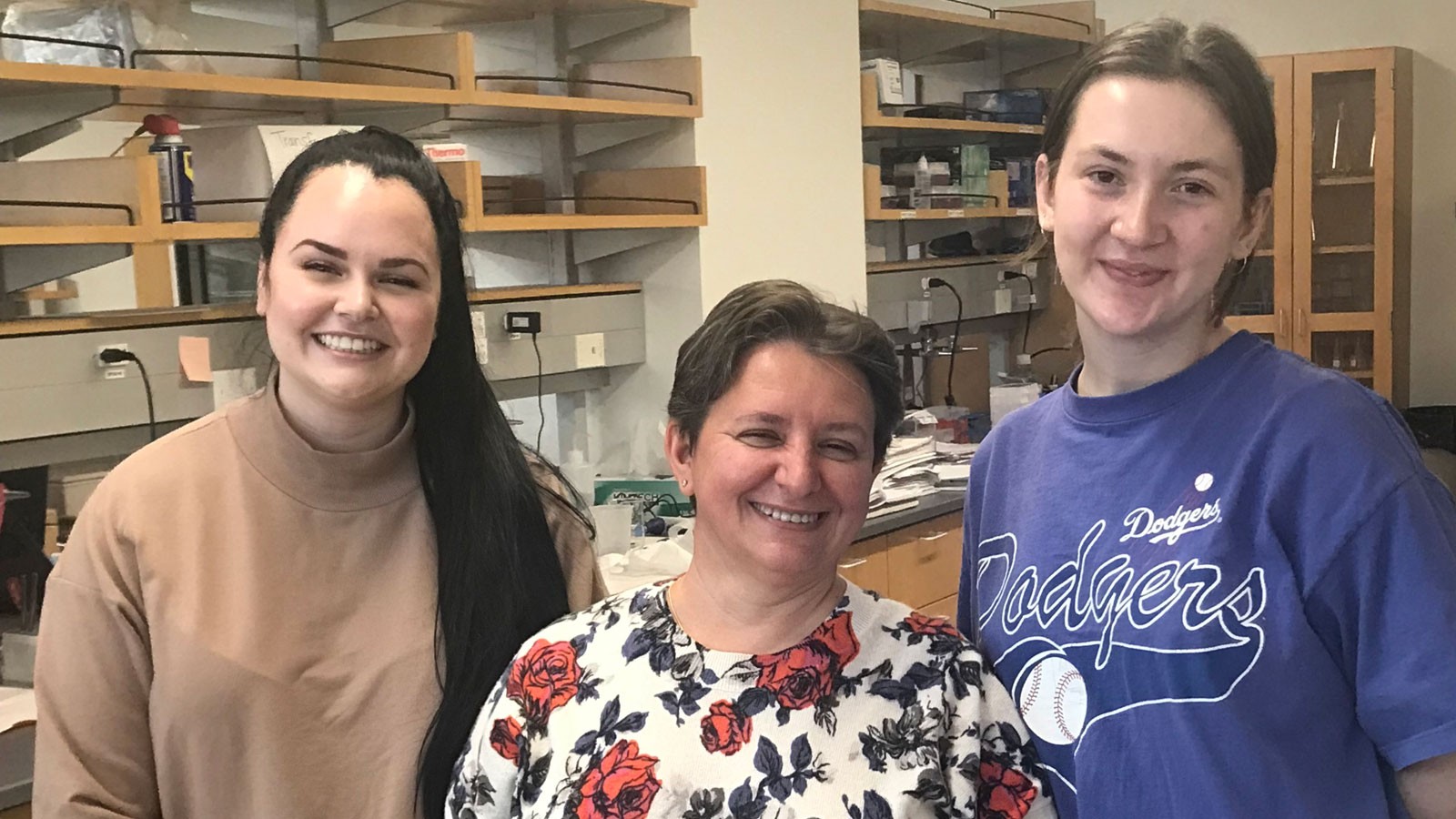USU's Mona Buhusi Fights Cognitive Decline With the Help of Swimming Mice
By Allyson Myers |
Mona Buhusi, center, stands with undergrad researchers Madison Treasure Areno, left, and Sophia Mouritsen in Buhusi's lab.
Mona Buhusi, a Utah State University associate professor in psychology who specializes in neuroscience, believes that our memories are, in a way, who we are.
As we age, our ability to learn and remember can decline, which can affect our ability to accomplish daily tasks, our quality of life, and even our personality. Buhusi has spent much of her research career studying how cognitive decline happens and how it can be reduced, and she does this with the help of some unlikely research partners: swimming mice.
To learn about the effects of cognitive decline on learning and memory, Buhusi’s lab in the Emma Eccles Jones College of Education & Human Services studies mice as they swim through a maze to an exit platform. In repeated trials of this task, young mice are more able to quickly and efficiently remember the correct route to get out of the maze. Older mice do not learn or remember as well as the young mice and do not perform as well.
This difference in performance based on age is due to the fact that older brains have less neuroplasticity, or ability to adapt and change in response to experiences. Older brains have smaller amounts of mature BDNF (brain derived neurotrophic factor), a key molecule involved in learning and memory, and more proBDNF, a precursor molecule that contributes to synapse remodeling and cell death.
Through her research, Buhusi has determined that certain drugs can modify the effects of proBDNF, enabling older mice to learn and remember the mazes better. This research could contribute to interventions to reduce or prevent cognitive decline in humans affected by aging, Alzheimer’s disease, or other forms of dementia.
“It is always easier to prevent than to treat,” Buhusi said. “If we learn how things go wrong, maybe we can learn what to do so they don't go wrong in the first place.”
In addition to her primary research focuses, Buhusi and some of her graduate students also study how BDNF plays a role in depression and schizophrenia.
Buhusi is now embarking on research focusing on the role of astrocytes, which are star-shaped glial cells, in the brain. Glial cells provide physical and chemical support to neurons.In the aging brain, astrocytes become impaired and affect our ability to recall or to update our memories. Buhusi will examine if and how drugs that target astrocytes can have a positive effect on cognitive impairment.
Buhusi’s lab includes undergraduates collecting and analyzing behavioral data and photographing brain cells. Madison Treasure Areno, psychology major, will receive a research assistantship from the Alzheimer’s Disease and Dementia Research Center at USU to work with a mouse model of Alzheimer’s disease. Sophia Mouritsen, biochemistry major, has received an Undergraduate Research and Creative Opportunities grant to study a model of depression.
WRITER
Allyson Myers
Public Relations and Marketing Assistant
Emma Eccles Jones College of Education and Human Services
allyson.myers@usu.edu
CONTACT
Sylvia Read
Professor & Associate Dean
School of Teacher Education & Leadership
435-797-2714
sylvia.read@usu.edu
TOPICS
Research 877stories Health 308stories Psychology 44stories Alzheimer's Disease 26storiesComments and questions regarding this article may be directed to the contact person listed on this page.







